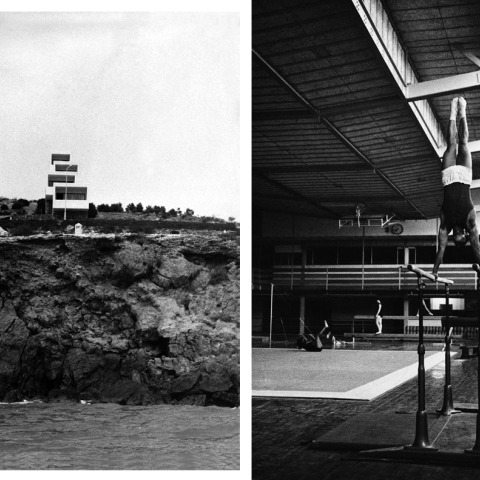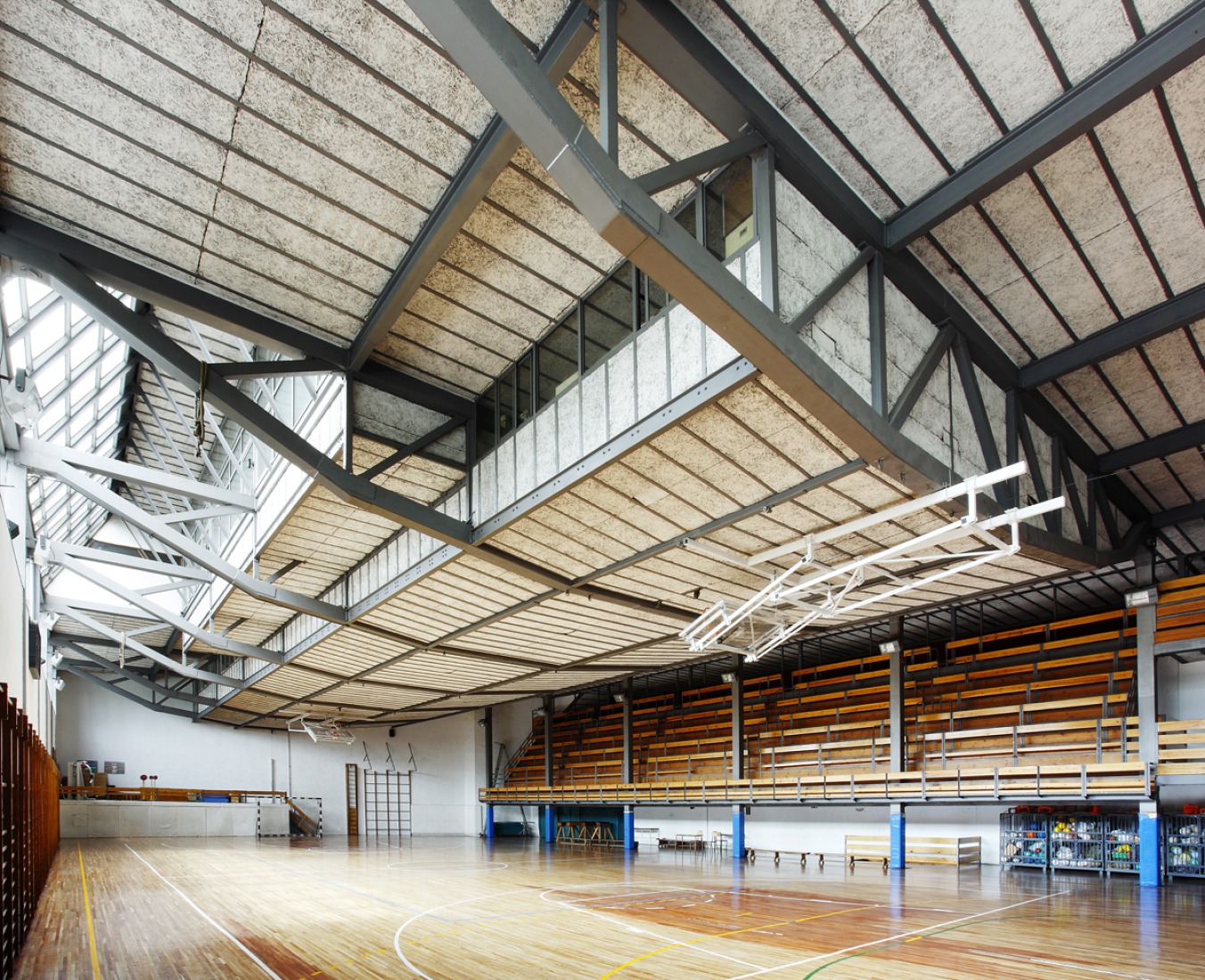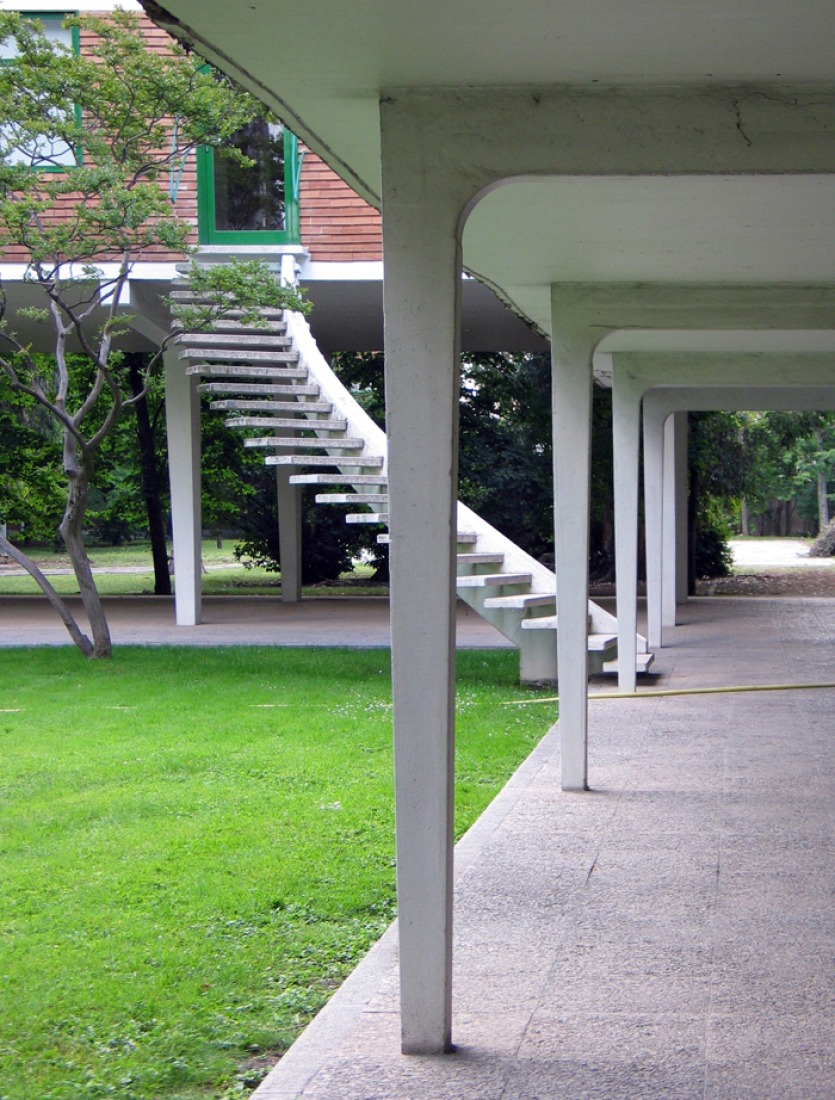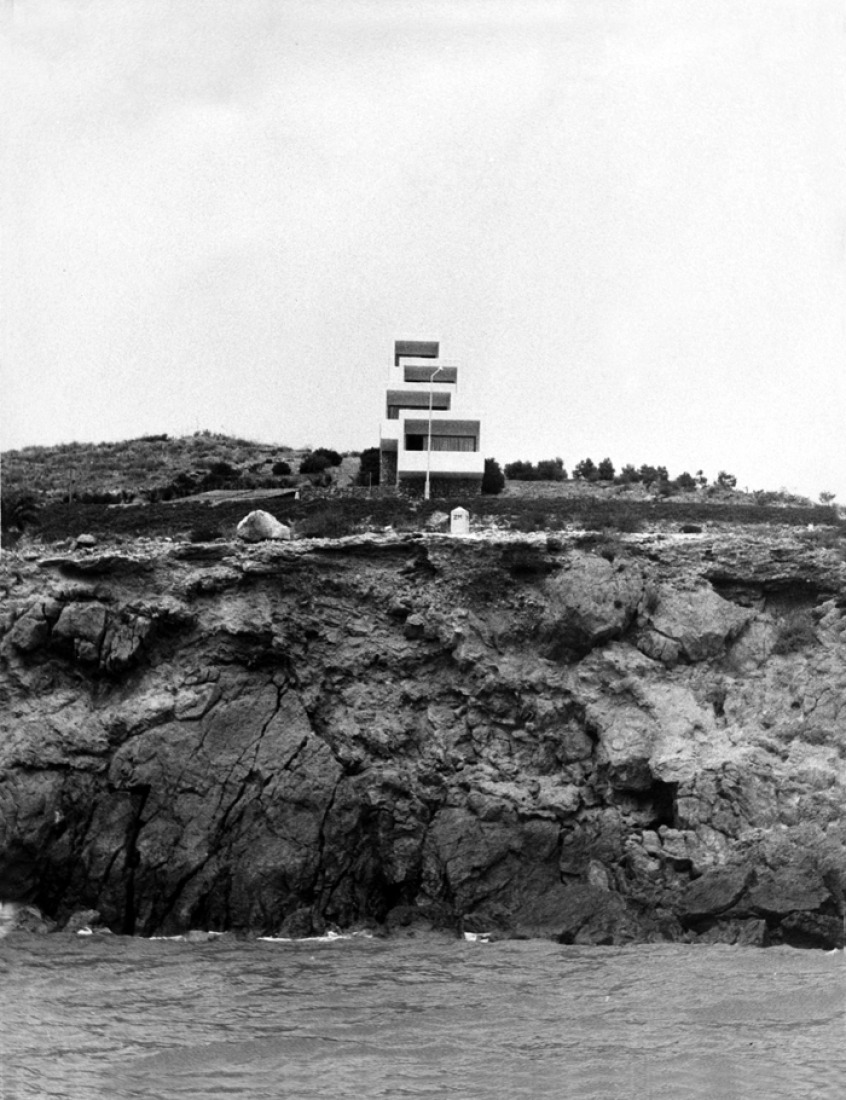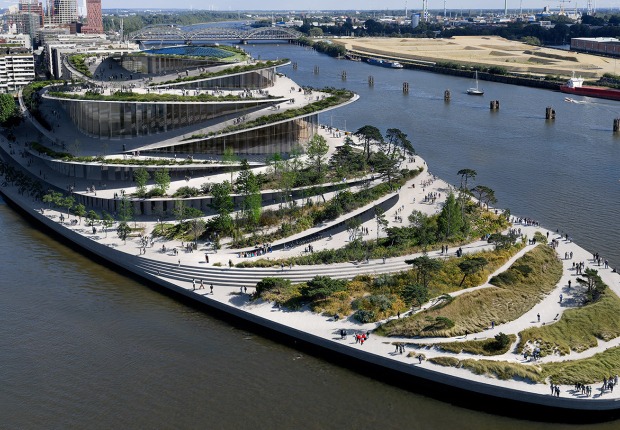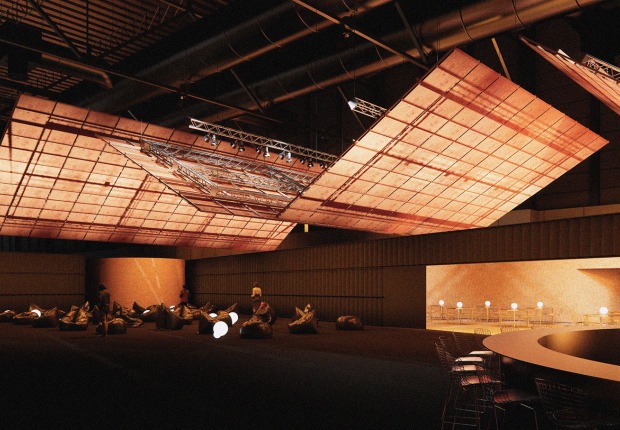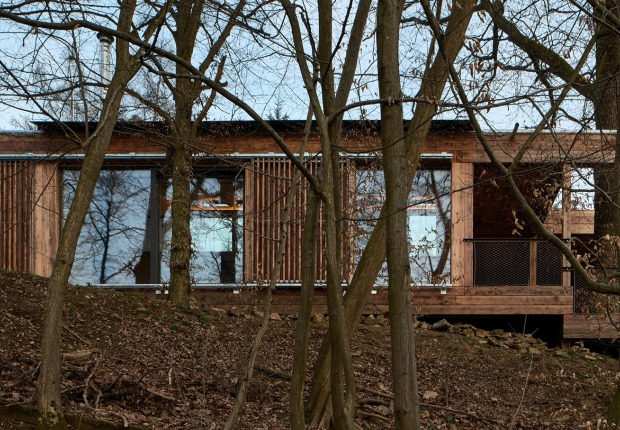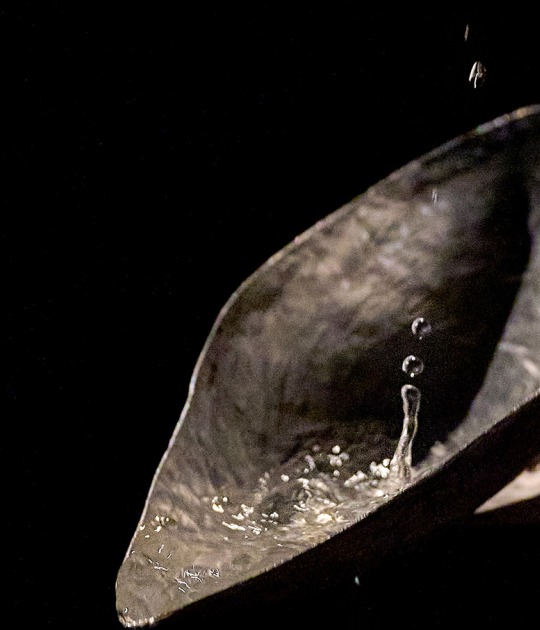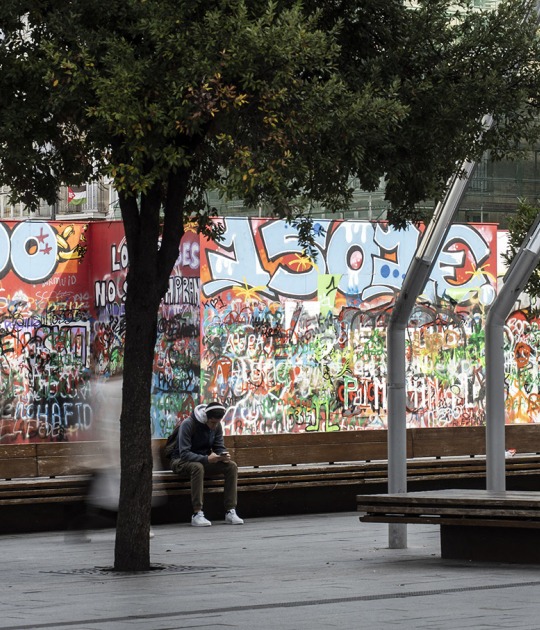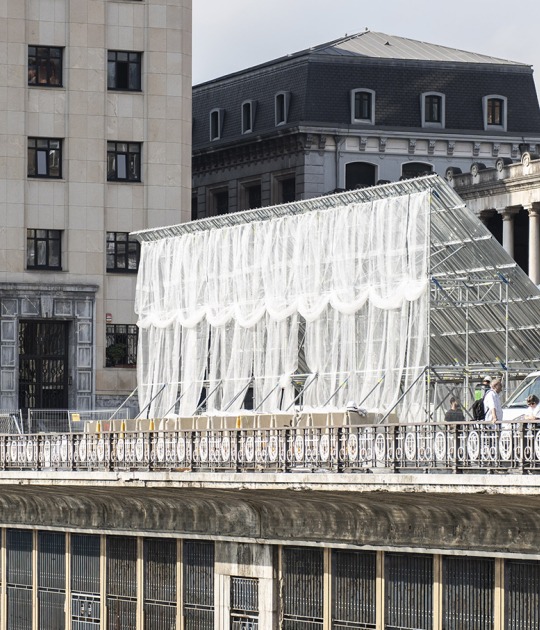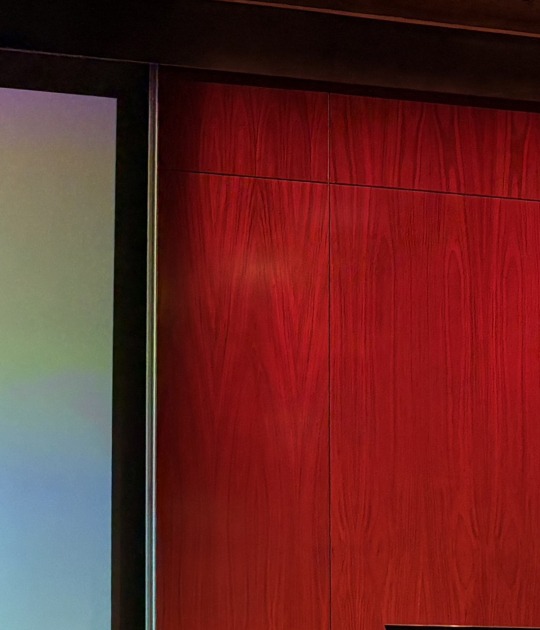Miguel Fisac Serna, born in 1913 in Daimiel, Ciudad Real and died in 2006 in Madrid. He was an essential figure in Spanish architecture in the second half of the twentieth century. He enrolled at the School of Architecture in Madrid, and after hectic studies interrupted by the civil war, in 1942 he graduated with the end of his career award from the Royal Academy of Fine Arts of San Fernando.
He was always interested in vernacular architecture. In addition, he was inspired by the Nordic organicism of Gunnar Asplund's work that together with Frank Lloyd Wright will influence his concept of architecture.
His first project was commissioned by the CSIC; He transformed the old auditorium of the "Colina de los Chopos" in Madrid in the Capilla del Espíritu Santo.
Miguel Fisac in his career projected numerous religious works. Its ecclesial production stands out for the personal interpretation of religious aesthetics, the use of light and the spatial dynamism and poetics in its forms, with curved walls, converging and tensioned surfaces.
The Parroquia de Santa Ana in Madrid (1965) is considered one of the most important projects. Built in exposed concrete, it manifests an atmosphere of humble simplicity.
His architectural style evolved in relation to the new materials of the time. From abstract classicism, to brick, to the exclusive use of concrete. Fisac researched a lot about this material and patented his “bone beams”. Prefabricated pieces of prestressed concrete that allowed to obtain large lights and control lighting. In 1960 they were used for the first time, in the construction of the Centro de Estudios Hidrográficos in Madrid.
Later, he experimented with various techniques to give texture to concrete, including in his work a more emotional character. His dissatisfaction with the limits of traditional wooden formwork, led him to patent, in 1973, an innovative solution for the time: the "flexible formwork" that could be implemented in the Mupag Rehabilitation Center (Madrid) and in many others later works.
His activity was not reduced only to the field of construction, but his creative ability led him to write articles, books, and design furniture. He made exhibitions, also of art presenting 60 of his paintings in Madrid.
Miguel Fisac built more than 350 projects, including the emblematic "Pagoda" in Madrid, which unfortunately was demolished in 1999. On the contrary, many of his works are protected and cataloged. Some examples are the Church of Pumarejo de Tera (Zamora), the Church of the Apostolic College of the Dominican Fathers (Valladolid), and in Madrid works such as the Parish Center of Santa María Magdalena (1966) or the IBM Building (1967).
All these activities culminate with the obtaining in 1994 of the Gold Medal of Architecture, and three years after the Antonio Camuñas Prize. In 2002 he received the National Architecture Award. Since 2006, the College of Architects of Ciudad Real manages the Fisac Foundation that is responsible for cataloging all documentation, as well as promoting and safeguarding the work of the Spanish architect, urban planner and painter.
